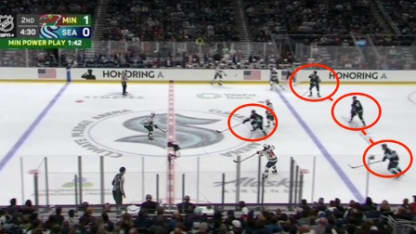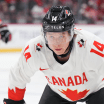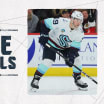Right now, no other team is clearing the puck successfully more than the Kraken are when playing shorthanded (3.01 per 2 minutes of play), and their overall success rate on those dump-outs is third best in the league (81.2%).
So, the Kraken strategy isn't just keeping other teams' power plays away from generating attacks, they are also eating up time and opponents' energy by sending the puck often all the way down to the other end of the ice requiring skaters to cover a lot more ice to regain possession and regroup for a breakout.
In fact, there's so much in and out of the zone as well as back and forth that the Kraken penalty kill allows the fifth lowest offensive zone possession time by opponents (34.4 seconds per two minutes of play).
Now, of course, power plays do find a way through - especially if they can find a seam for a pass or sharp cut through with possession. This is where Kraken skaters feel they are doing a good job following the structure they've built for in-zone play, too.
"We've had success as of late," Morgan Geekie said. "I think it's communication. Being predictable. We don't ad-lib too much out there. We're doing the same things every time so it makes it easy to read off of, make plays, and count on each other. It's being reliable to each other and being solid as a group."
When other teams' power plays have the puck, the Kraken apply pressure and work to clear possession out of their own zone or at the very least, challenge any scoring chances.




















